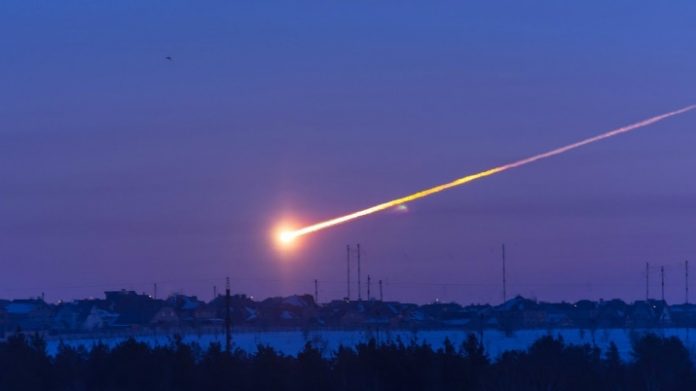The fireball hundreds of people reported over the Washington coast Wednesday night was a meteor entering our atmosphere.
Several people on the Washington coast also reported hearing a loud boom, which would elevate the event to a category called a bolide — a rare, extremely bright fireball that creates a sonic boom as it penetrates the Earth’s stratosphere and explodes.
“When I started getting phone calls from the entire coast … I knew it was a fairly large event, whatever it was,” said Chuck Wallace, deputy emergency management director for Grays Harbor County.
Many observers reported seeing the flash first, followed seconds or minutes later by the sound. “A bolide comes in at an angle and can make noise,” Wallace said. “I think that’s pretty much what happened.”
The American Meteor Society, which tracks fireballs around the world, received 11 online reports of the flash, which occurred at about 7:30 p.m. Wednesday.
A similar effect also can be created when space debris — pieces of old satellites, bolts, rocket stages and other man-made objects — plunge back to Earth.
The Aerospace Corporation’s Center for Orbital and Re-entry Debris Studies, which tracks most chunks of orbiting debris the size of a softball or larger, did not expect anything to re-enter the atmosphere and be visible in the Pacific Northwest on Wednesday evening, according to Aerospace’s Ted Muelhaupt.
The center has been tracking China’s first space station, called Tiangong-1, but the 8.5-ton module is not expected to fall to Earth until sometime between March 24 and April 19.
Most of the bright streaks of light called meteors are produced when particles ranging from the size of a sand grain to a small pebble ionize as they plunge into the Earth’s atmosphere at speeds of up to 160,000 mph. Thousands of meteors of fireball magnitude occur every day, but most are never seen because they hit during the day or over uninhabited areas, according to the American Meteor Society.
One of the most spectacular fireballs in recent history was the superbolide near Chelyabinsk, Russia, on Feb. 13, 2013. Caused by an asteroid about 60 feet in diameter hitting the atmosphere, the massive explosion was widely captured on video and produced a shock wave that shattered glass, damaged buildings and injured 1,200 people.















